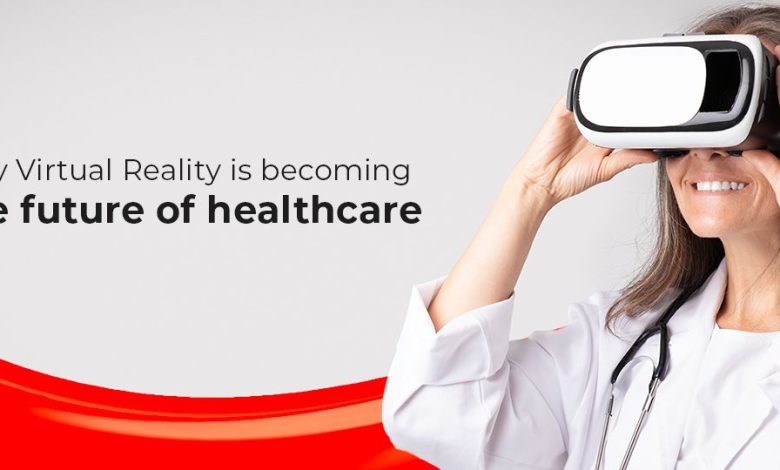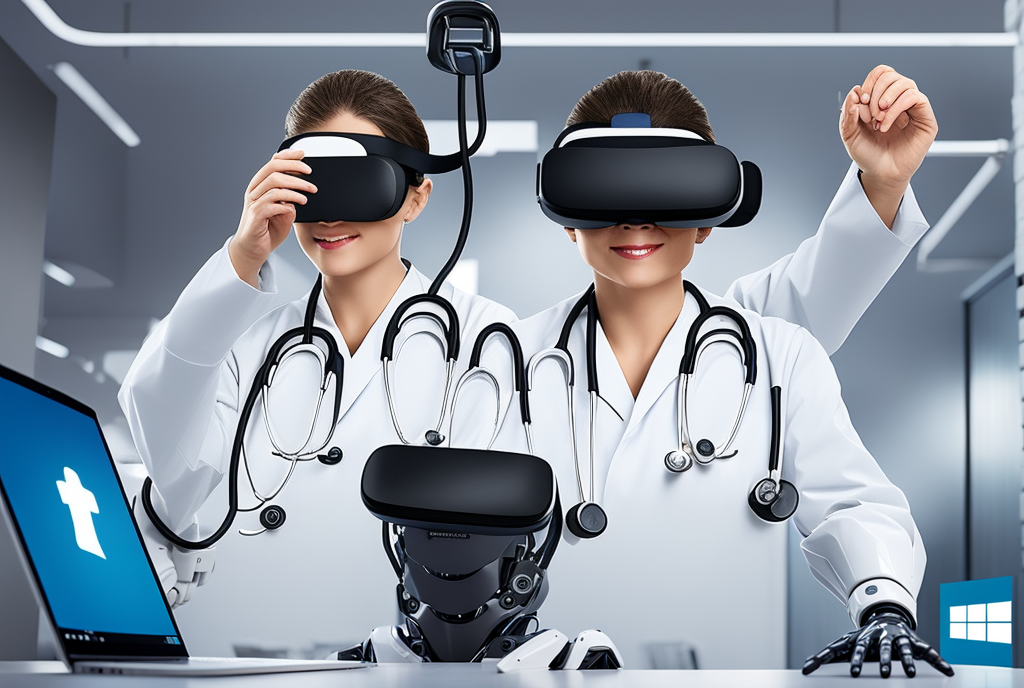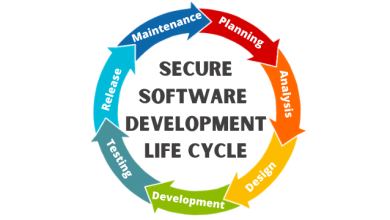The Future of Healthcare with VR

Introduction: VR Transforming Healthcare
Virtual reality (VR) is revolutionizing healthcare. Once considered primarily for gaming, VR is now a powerful tool for medical training, treatment, and patient care. By creating immersive experiences, VR allows healthcare professionals to learn, practice, and treat in innovative ways. As VR technology advances, it opens new possibilities in healthcare, improving outcomes for patients and creating safer, more effective treatment options.
VR in Medical Training
VR is changing how medical students and professionals train. With VR, they can practice skills in a controlled, virtual environment.
1. Simulated Surgeries and Procedures
VR simulations allow medical professionals to practice surgeries without the need for real patients. For example, VR enables surgeons to work through procedures step-by-step, learning complex techniques without risking patient safety. These realistic simulations help build skills, confidence, and precision.
2. Hands-On Learning for Students
Medical students can benefit from VR’s hands-on approach. Rather than learning solely from textbooks, students can engage in 3D, interactive lessons. For example, they can explore the human body in detail, learning about organs and systems through realistic models. This kind of experiential learning enhances retention and understanding.
3. Remote Training Opportunities
VR also enables remote training, breaking down geographic barriers. Medical professionals from around the world can train together in VR, learning from experts without the need for travel. This accessibility ensures more people have access to high-quality medical training.

VR for Pain Management and Therapy
Beyond training, VR is also being used to treat patients directly, especially in managing pain and therapy.
1. Reducing Pain Perception
VR has proven effective in reducing pain perception. In VR, patients can engage in immersive experiences, such as exploring calming landscapes or playing interactive games. These distractions help the brain focus on something other than pain, reducing its intensity. For example, burn patients have used VR during wound care, reporting less pain compared to traditional treatment.
2. Mental Health and Therapy
In mental health, VR offers new therapy options. Patients dealing with anxiety, PTSD, or phobias can use VR to face fears in a controlled environment. For instance, someone with a fear of heights can experience virtual heights gradually, helping them build confidence over time. Therapists guide patients through these scenarios, helping them develop coping skills in real-time.
3. Physical Rehabilitation and Recovery
VR can assist with physical therapy and rehabilitation. Patients recovering from injuries or surgeries can perform guided exercises in VR. These exercises are often more engaging than traditional therapy, motivating patients to complete their sessions. VR can track movements, providing feedback to patients and therapists, which improves progress.
Enhancing Patient Care with VR
VR technology also enhances patient care in hospitals, clinics, and even at home.
1. Educating Patients on Procedures
VR helps patients understand complex procedures by showing them virtual demonstrations. For example, before a surgery, patients can see a VR simulation of the process. This visual information helps reduce anxiety and makes patients feel more comfortable about their treatment plans.
2. Remote Consultations and Virtual Visits
VR is advancing telemedicine by enabling virtual visits in immersive environments. In rural or underserved areas, patients can consult with specialists without traveling. Through VR, doctors and patients interact in a more personal setting than traditional video calls, making virtual consultations feel more real and engaging.
3. Providing Comfort in Pediatric Care
VR can also be used to comfort children undergoing medical procedures. Hospitals use VR headsets to distract young patients during treatments, such as injections or MRIs. By immersing children in a game or virtual adventure, healthcare providers can make the experience less stressful.
VR for Diagnosing and Planning Treatments
VR is also transforming diagnosis and treatment planning.
1. Improved Imaging and Diagnosis
VR can turn CT scans and MRI images into 3D models, allowing doctors to view detailed representations of the body. These 3D images help them diagnose conditions with greater accuracy. For example, a surgeon can explore a patient’s heart in VR before surgery, identifying any potential complications beforehand.
2. Personalized Treatment Plans
Doctors can use VR to simulate different treatment options and predict outcomes. This approach enables them to create personalized treatment plans for patients. For example, oncologists can model tumor growth in VR, evaluating which treatments might work best. This predictive capability ensures that patients receive the most effective care possible.
3. Preoperative Planning for Surgeons
For surgeons, VR offers a way to plan complex surgeries. Before operating, they can go through each step in a VR model of the patient’s anatomy. This preparation helps them refine techniques, anticipate challenges, and ultimately improve surgery outcomes.
Benefits and Advantages of VR in Healthcare
VR brings numerous advantages to healthcare, including improved learning, patient outcomes, and accessibility.
1. Enhanced Learning and Skill Development
VR accelerates learning by providing practical experience without risks. Medical professionals can practice skills repeatedly, improving their precision. This experience helps them become better prepared for real-life situations.
2. Cost-Effective Training Solutions
VR training can be more cost-effective than traditional methods. Instead of costly, hands-on workshops, VR provides virtual labs and simulations. This approach reduces expenses while still offering high-quality training experiences.
3. Accessibility to Quality Care
VR increases access to healthcare, especially in remote areas. Patients who lack access to specialists can consult through VR. Similarly, medical students from diverse locations can access high-quality training, ensuring a larger, better-trained healthcare workforce.
4. Improved Patient Experience
VR provides comfort, reduces anxiety, and enhances understanding. For patients undergoing treatment, VR distractions make procedures easier. VR explanations help patients feel informed and confident about their care.

Challenges of Implementing VR in Healthcare
While VR has numerous benefits, challenges exist in its implementation.
1. High Costs of VR Equipment
VR technology, especially high-quality equipment, can be expensive. Many healthcare providers may struggle to invest in VR headsets, software, and support. However, as VR technology becomes more mainstream, costs may gradually decrease.
2. Technical and User Limitations
Some users may experience discomfort, such as dizziness or nausea, when using VR. Technical issues, like lag or poor image quality, can also disrupt the experience. Ensuring high-quality, user-friendly VR systems is essential for widespread adoption.
3. Need for Specialized Training
Healthcare providers need specialized training to use VR effectively. From operating VR equipment to understanding VR medical applications, proper training is essential. Implementing VR requires time, resources, and commitment from healthcare institutions.
The Future of VR in Healthcare
The potential for VR in healthcare is vast. As VR technology advances, it will play a larger role in patient care, medical education, and treatment planning.
1. Integration with AI and Data Analytics
VR is expected to integrate with AI and data analytics, allowing for personalized treatment insights. For example, AI-driven VR simulations can adapt to individual learning needs, improving training effectiveness.
2. Expanding VR Applications in Mental Health
In mental health, VR’s future looks promising. VR applications for anxiety, phobias, and stress management are expanding. By simulating environments that help patients cope, VR can provide more accessible, effective mental health treatments.
3. Greater Access in Developing Regions
VR can bridge healthcare gaps in developing regions. By providing remote access to quality care and training, VR can bring expertise to underserved areas, improving global health outcomes.
Conclusion: Embracing VR for a Healthier Future
VR is transforming healthcare by enhancing medical training, improving patient care, and expanding treatment options. From immersive simulations to patient education, VR offers endless possibilities for innovation. Although challenges like costs and technical limitations exist, the benefits are profound. As VR technology advances and becomes more accessible, it will continue to shape the future of healthcare. Embracing VR can lead to better-trained healthcare professionals, more effective treatments, and improved patient experiences.




